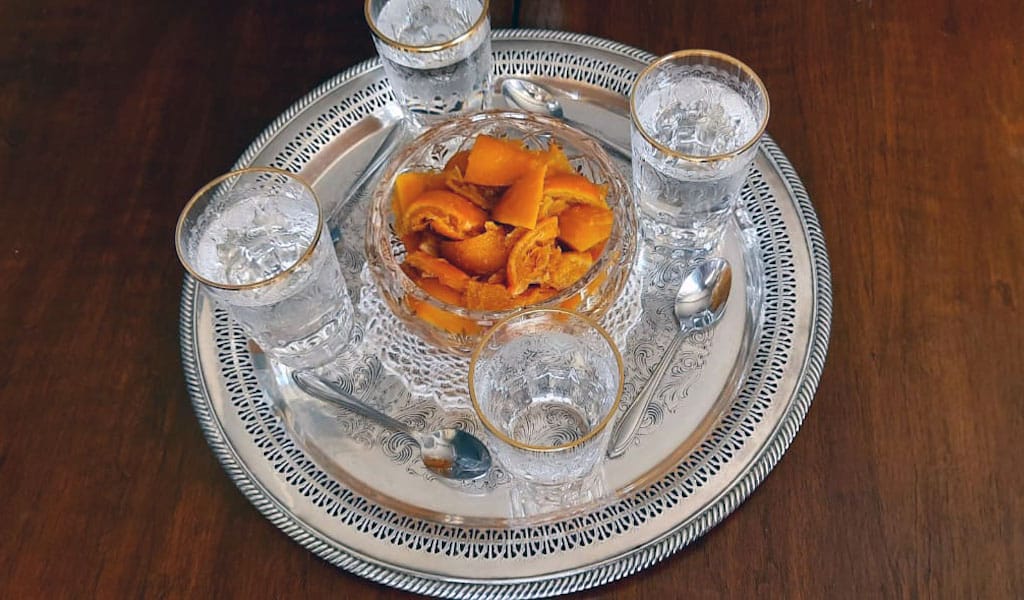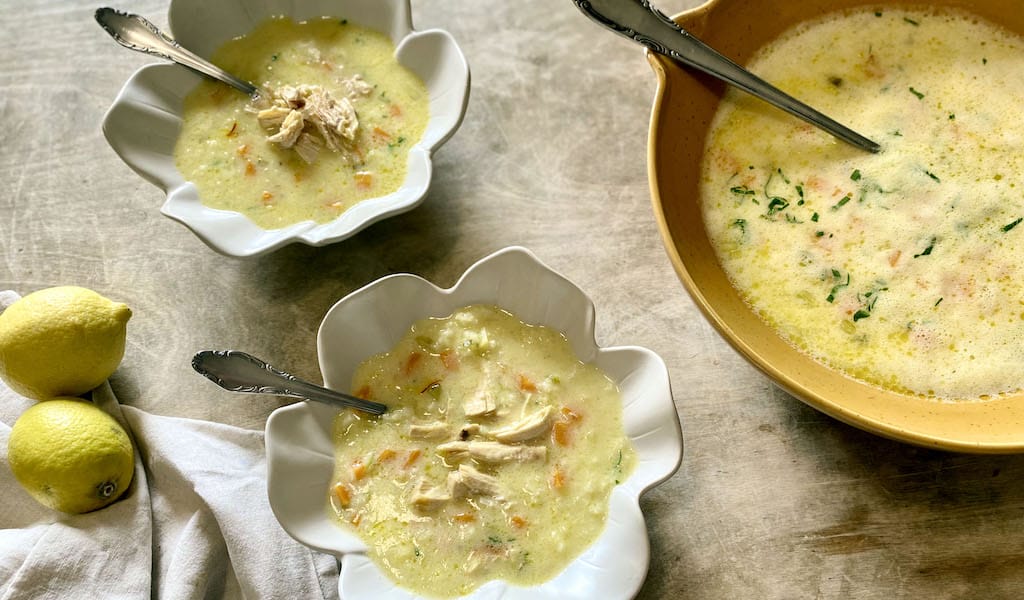Alongside chef and restaurateur André Magalhães in his Lisbon restaurant Taberna da Rua das Flores, we stare down a rustic clay vessel piled with a mixture of steaming clams, fragrant cilantro and garlic, wedges of lemon…and not a whole lot more. As recommended by André (“It’s tastier if you use your hands”), we pinch the clams with our fingers and, after eating the meat, use the shells to scoop up the mixture of olive oil, clam broth, herbs and lemon juice that coats the bottom of the dish. It’s savory, rich, salty, tart and fragrant, and as with many Portuguese dishes, we’re left wondering how it’s possible that so much flavor came from so few ingredients.

Taberna da Rua das Flores is far from the only place in Lisbon where people might be having this same experience. The dish we’re eating, amêijoas à Bulhão Pato, “clams in the style of Bulhão Pato,” is a bona-fide local classic, one that’s served in taverns, restaurants, beer halls and seafood places across the city.
“Lisbon is on the bank of the Tagus River, which is the biggest estuary in Europe, and maybe the one richest in biodiversity,” André explains when asked about the origins of the dish. “People here [have always] had a tradition of eating shellfish, clams and other bivalves.”

He describes itinerant vendors who used to cross Lisbon with pails of steamed mussels, possibly jazzed up with fragrant herbs or a squeeze of lemon, likely a precursor to the dish that Lisbon loves today. Yet if you wagered that Bulhão Pato, the dish’s namesake, was a chef, you’d be on the losing end.
“He was a writer and poet, a bit of a dilettante,” André tells us of Raimundo António de Bulhão Pato, who lived in the Lisbon area during the late 19th and early 20th centuries. “He hung out with a bunch of other writers and poets, and these guys were gourmands – they liked to go out to eat and drink.”
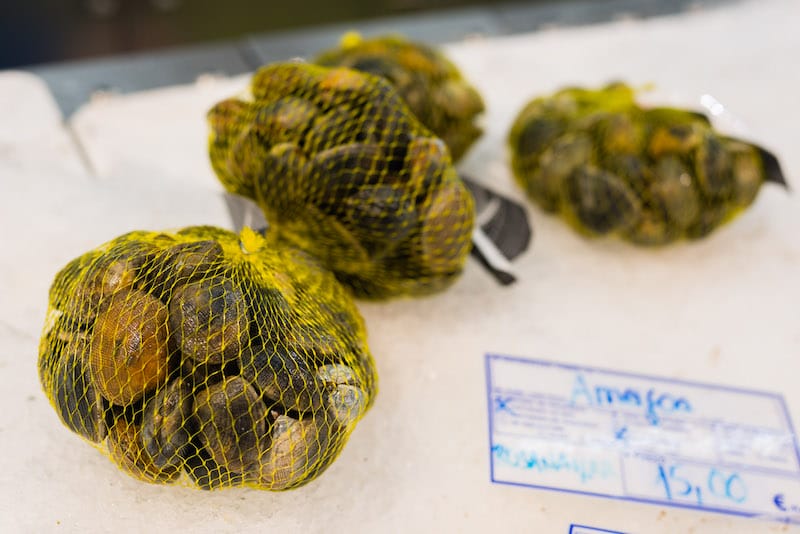
André goes on to explain that there was a cook in Lisbon who used to cook clams the way Bulhão Pato liked: “very simply, with cilantro, garlic, olive oil and lemon juice.” The preparation became so closely associated with Bulhão Pato that it stuck, and more than a century later, his name continues to be linked to the dish. An early influencer, one might say.
In subsequent decades, the simple preparation has occasionally been made slightly less simple via additions that range from white wine to butter.
“The capital sin is adding mustard, which beer halls used to do to encourage people to dip bread and drink more,” André tells me.
Bulhão Pato may have lived an outsized life, but the dish named for him is, ideally at least, an exercise in minimalism.
Recipe: Amêijoas à Bulhão Pato
Chef/restaurateur André Magalhães has made a few subtle but effective tweaks to this classic Lisbon dish. He sautées cilantro stems and roots in olive oil to extract their essential oils, tossing the tender leaves in at the end so they don’t wilt. Depending on how much liquid your clams shed (which is related to how fresh they are), you may need to add a tablespoon or two of water and a pinch of salt (André suggests adding seawater, if that’s an option). André opts to add a bay leaf because, well, “Portuguese people like to use it.” And he plucks the clams from the dish as they open, one by one, so they don’t get overcooked.
André adds that bread is obligatory to serve with amêijoas à Bulhão Pato because that’s simply how people in Lisbon tend to eat, but we suspect it’s yet another way to consume every last drop of that precious sauce.
Suggested wine pairing: a Quinta da Lapa Alvarinho or similar young, citrusy, slightly effervescent wine goes great with this dish
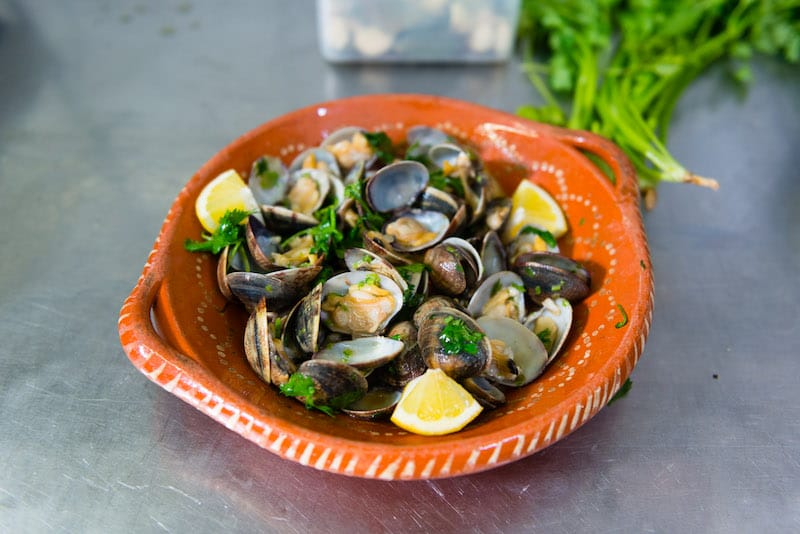
Serves 2 as a petisco (a Portuguese-style drinking snack)
1 small bunch cilantro (around 30g; including stems and, if possible, roots)
5 cloves garlic (around 15g total), peeled and crushed with the side of a knife
4 tablespoons olive oil
1 bay leaf
1kg clams, cleaned
1 lemon, halved lengthwise
Salt (optional)
Bread, for serving
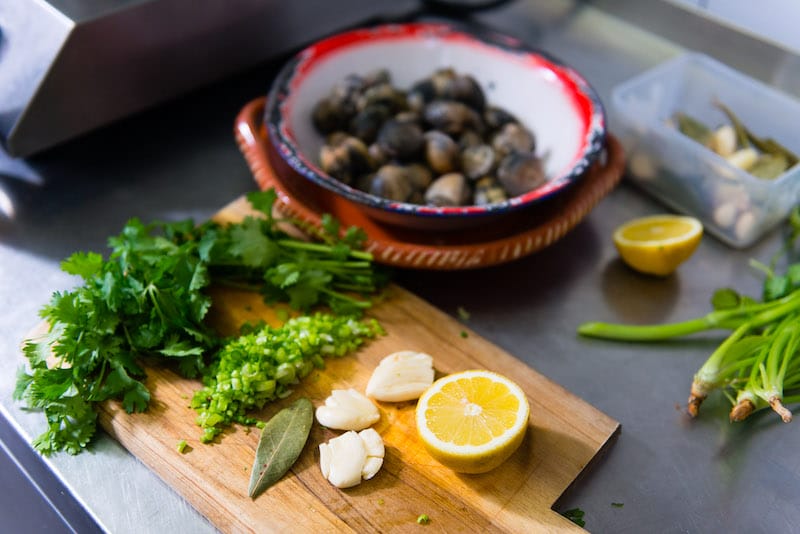
Prepare the cilantro: Thinly slice the cilantro roots and stalks. Set aside.
Cook the dish: To a large saucepan over medium heat, add the olive oil. Add the garlic, swirling and stirring until the garlic is fragrant and just starting to turn golden, around 1 minute. Add the reserved cilantro stems and roots, and the bay leaf, swirling and stirring until fragrant, around 1 minute.

Add the clams, close the lid and steam, stirring and shaking occasionally, until some of the clams have opened, around 2 minutes.
Remove the lid, reduce the heat to medium-low, and as the clams open, remove them to a bowl, continuing until all the clams have been removed.
If, at this point, there’s very little liquid at the bottom of the saucepan, add enough water to make a thin layer on the bottom, and salt, to taste. Otherwise, add the clams back to the saucepan, return the heat to medium, and when the liquid starts to simmer again, turn off the heat. Tear the cilantro leaves by hand and add to the clams, along with the juice of half of the lemon, stir to combine.
Serve: Remove the clams to a shallow bowl, and serve with the remaining lemon in slices, with bread.
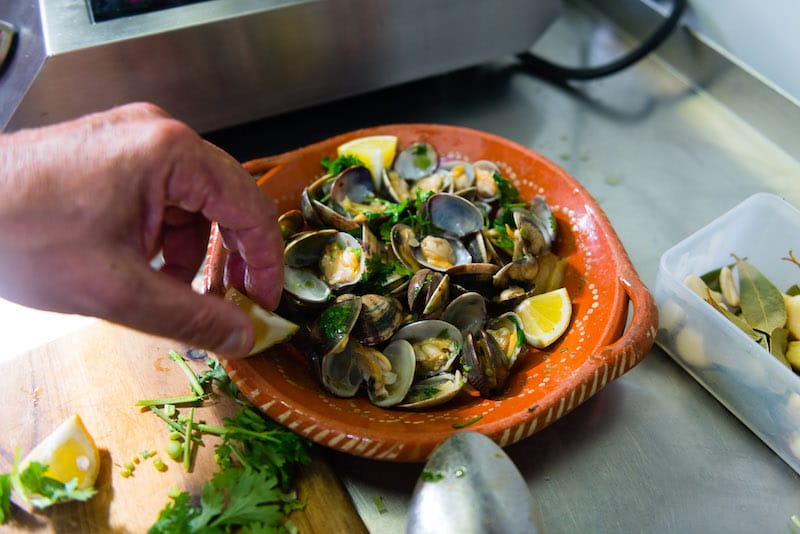
 March 1, 2021 Rum Diary
March 1, 2021 Rum Diary
“A proper Rum house has to have everything,” a venerable chef once told me in Greek, the […] Posted in Istanbul April 2, 2024 Grandma’s Folar Recipe
April 2, 2024 Grandma’s Folar Recipe
Folar is the generic name given to traditional Easter sweet bread in Portugal. Making it […] Posted in Lisbon January 17, 2024 Recipe
January 17, 2024 Recipe
I can’t think of a more comforting dish than soup. It can be as simple or complex as you […] Posted in Athens
Austin BushAustin Bush
Published on August 26, 2022
Related stories
March 1, 2021
Istanbul | By Nektaria Anastasiadou
Istanbul“A proper Rum house has to have everything,” a venerable chef once told me in Greek, the language that we have proudly spoken within our Istanbul community for more than 2,000 years. “Spoon sweets, lakerda, pickles, liqueurs…” He then puckered his grey mustache and switched into Turkish: “Olmazsa olmaz,” which is best translated by the…
April 2, 2024
LisbonFolar is the generic name given to traditional Easter sweet bread in Portugal. Making it from scratch is somewhat of a long process, but being confined due to the coronavirus crisis, we seem to have a bit more time on our hands than expected. My family’s folar recipe is from my grandmother Felismina, who was…
January 17, 2024
AthensI can’t think of a more comforting dish than soup. It can be as simple or complex as you wish, and as cheap or expensive as you can afford. Just open your fridge or pantry, and you’re sure to find something to turn into a liquid meal – vegetables, herbs, spices, meat, poultry, seafood, grains, legumes……


















































